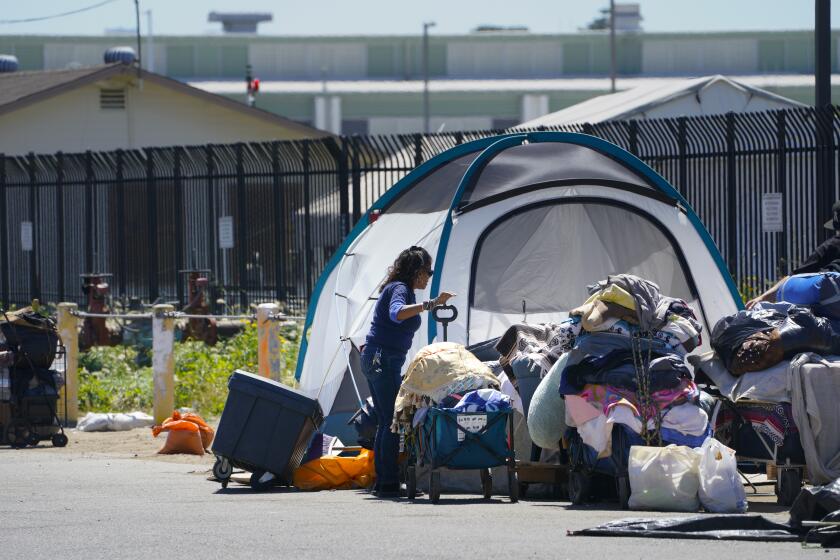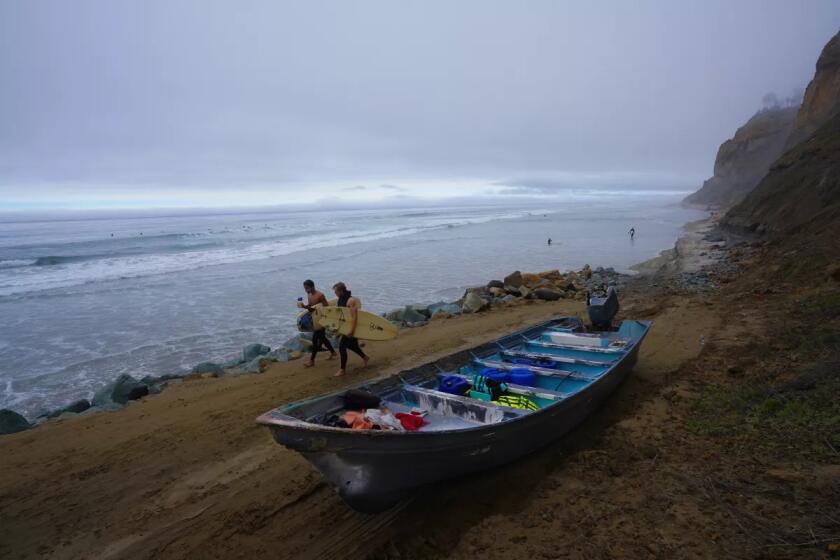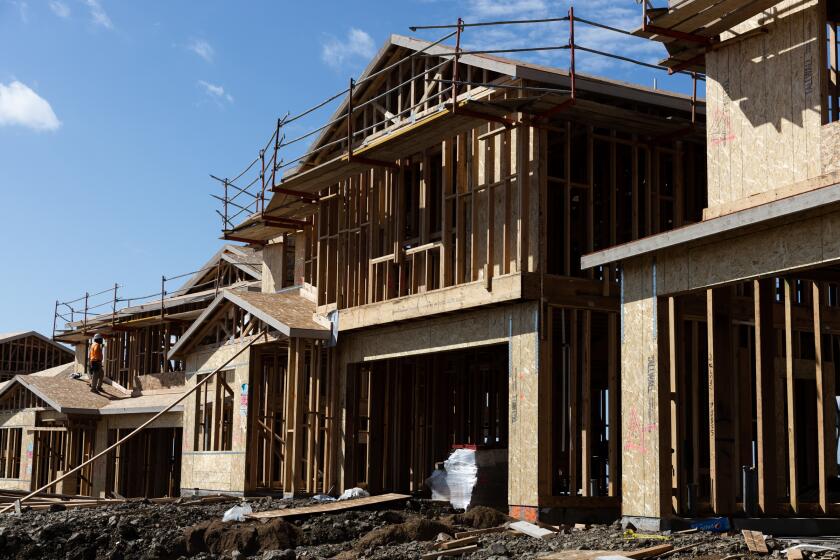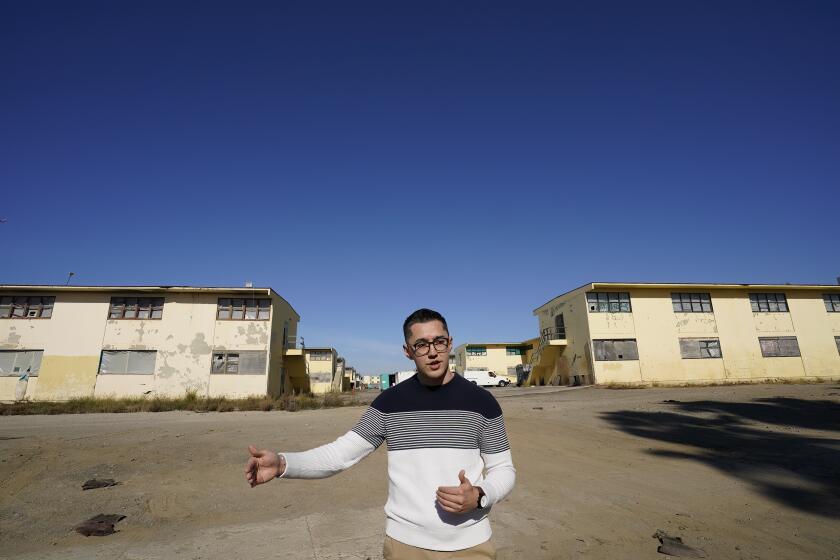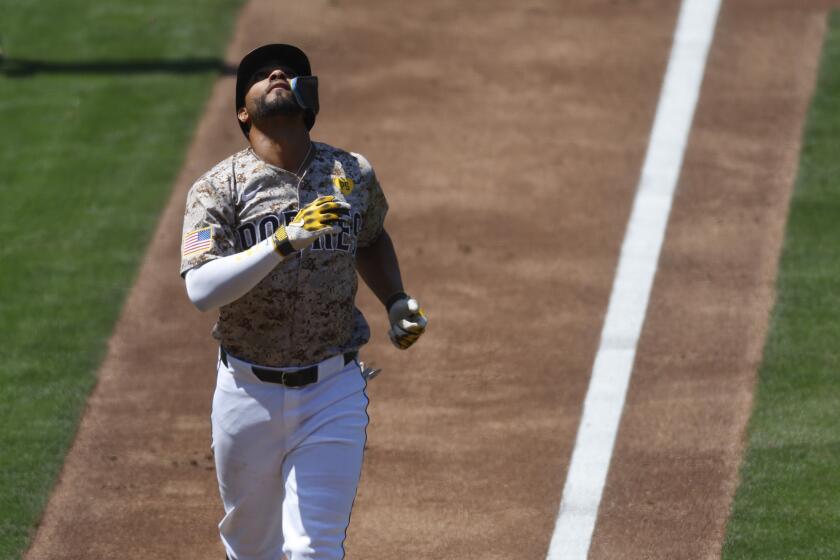Column: Mayor Gloria has long eyed demilitarizing police, not defunding it
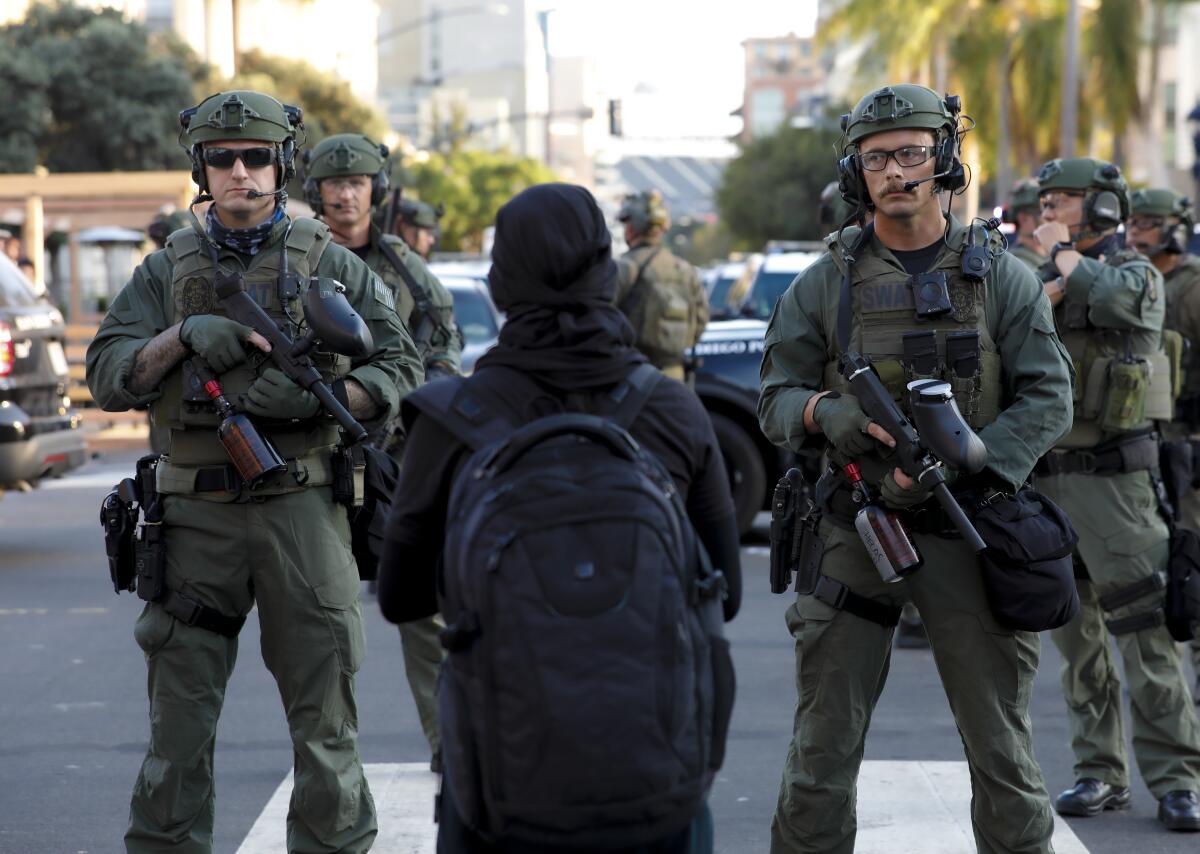
Mayor further suggests policies requiring police to respect civil liberties and stronger crime-fighting efforts are not mutually exclusive
There’s been a little-noticed change in recruitment videos for the San Diego Police Department.
In 2020, the SDPD recruitment webpage prominently featured a 15-second video with more than a dozen rapid-fire scenes centered on SWAT team action, including armed, helmeted officers jumping out of a tactical vehicle and others bursting into a room. Police boats and cars speed across the screen as radios crackle and heavy-metal music blares.
Highly militaristic, the video mostly was shot in grainy gray tones. There is no narration.
This story is for subscribers
We offer subscribers exclusive access to our best journalism.
Thank you for your support.
A 30-second video that was swapped into the top spot after Todd Gloria became mayor sets a different tone. There are brief images of police cars with flashing lights and personnel in tactical gear, but the spot features individual testimonies from a diverse handful of officers about protecting and assisting the community.
“At the end of the day,” says one officer, “I like being part of something where I feel like we help people.”
That video was created before Gloria became mayor, but wasn’t in the marquee spot. The other video still exists, though now it’s buried far down the page with a couple of others.
After his election in November 2020, Gloria came into office and proposed several changes in police policies, expanding upon a trend at SDPD under his predecessor Kevin Faulconer. Among other things, Gloria pushed for greater transparency about the types of military gear and weapons the department has and how they are used.
That subsequently became mandatory for California police departments under a new state law, and SDPD last week unveiled a proposal on how to carry that out, according to David Hernandez of The San Diego Union-Tribune.
What Gloria did not call for is to “defund police,” something advocated by many progressive Democrats. Gloria continues to support the city’s yearslong effort to fully staff SDPD’s officer ranks, which he recently said is “about 300 less than what we think is ideal.”
It’s a pragmatic policy approach at a time of rising crime rates, which have the public increasingly concerned. It’s also a political balancing act, given that Gloria was endorsed both by the local Democratic Party, which generally wants more limits on police, and the San Diego Police Officers Association, which generally does not.
Further, the ill-advised term “defund police” has become a political albatross for many Democrats across the country. The resulting backlash along with an increase in crime led to proposed police cuts being scuttled and, in some places, increased budgets.
The demand to reduce funding followed a groundswell of frustration and protests over police use of force after the death of George Floyd at the hands of a Minneapolis police officer, who later was convicted of murder.
The defund police movement overshadowed the underlying effort to stop excessive use of force, racial profiling and infringement of civil rights by police. Those hoped-for changes often were coupled with efforts to direct more money — perhaps out of police budgets — toward non-law-enforcement strategies to combat crime.
In his January State of the City speech, Gloria said strong crime fighting and such reforms should not be in conflict.
“You should be able to dial 911 and have an officer show up quickly to give you the help you called for,” Gloria said. “And, this help should come without excessive use of force, racial profiling, or any abuse by the men and women who are sworn to protect and serve.
“A great city can fully fund and support its law enforcement officers while also ensuring they honor their oath.”
He added: “We can and will strike the balance between protecting our residents and respecting their civil rights and civil liberties.”
He was more blunt last week when addressing Hillcrest Indivisible, a Democratic-leaning activist group.
“This may not be popular with more progressive audiences, but I have to tell you the truth: We’re not going to defund our police department,” Gloria said, according to Ken Stone of the Times of San Diego.
However, the mayor has taken some heat for the potential loss of police officers who refuse to comply with the city mandate requiring all employees be vaccinated against COVID-19, unless they are granted exemptions.
Efforts to demilitarize police are taking place in cities across the country. In San Diego, the emerging policy allows the police force to continue to use military equipment it already has and to obtain new gear, a proposal that will require the approval of the City Council. The plan requires SDPD to inventory its military gear — such as armored support vehicles, flashbang grenades and certain rifles — and report on how they are being used.
It doesn’t require the department to get rid of any equipment.
Still, that opens the door for the council to discuss whether deployment of the equipment is appropriate. Protesters and leaders in communities of color have said the presence of military hardware can exacerbate tensions and create a threatening image.
Meanwhile, a 2018 study of 9,000 U.S. law enforcement agencies concluded that police militarization does not reduce crime or change the number of officers killed or assaulted.
For all the focus on military gear, San Diego police leaders don’t seem to think the policy will be much of a concern. Jack Schaeffer, former president of the San Diego Police Officers Association, last year said the department hadn’t received much military hardware through a federal program that facilitates the transfer of such gear in years.
“It’s not going to be a big deal for us,” he told the Union-Tribune’s David Garrick in August when Gloria proposed greater scrutiny of SDPD’s military equipment.
Police Chief David Nisleit last week said, “We look forward to showing how these tools are used to de-escalate dangerous situations in our neighborhoods and how they are crucial to our public safety efforts.”
SWAT teams and other tactical units almost certainly will continue using military or military-style equipment well into the future. But that no longer is being held out as a lure to potential recruits.
A new video is being cut that will highlight diversity within the community as well as SDPD in the city’s ongoing effort to attract candidates from a broad spectrum of backgrounds, according Rachel Laing, Gloria’s director of communications.
Granted, recruiting videos tend to be slick promotional vehicles for all sorts of businesses and organizations, including SDPD. Regardless, the upcoming video likely will advance an ethos found in the current top-line video titled “Behind the Badge.”
“The goal for police work,” says a female SDPD officer, “is to treat people with kindness.”
That’s not something that occurs to a lot of people when they think about police. A number of San Diegans have complained they’ve experienced the opposite. So we’ll see how all this pans out.
Get Essential San Diego, weekday mornings
Get top headlines from the Union-Tribune in your inbox weekday mornings, including top news, local, sports, business, entertainment and opinion.
You may occasionally receive promotional content from the San Diego Union-Tribune.


